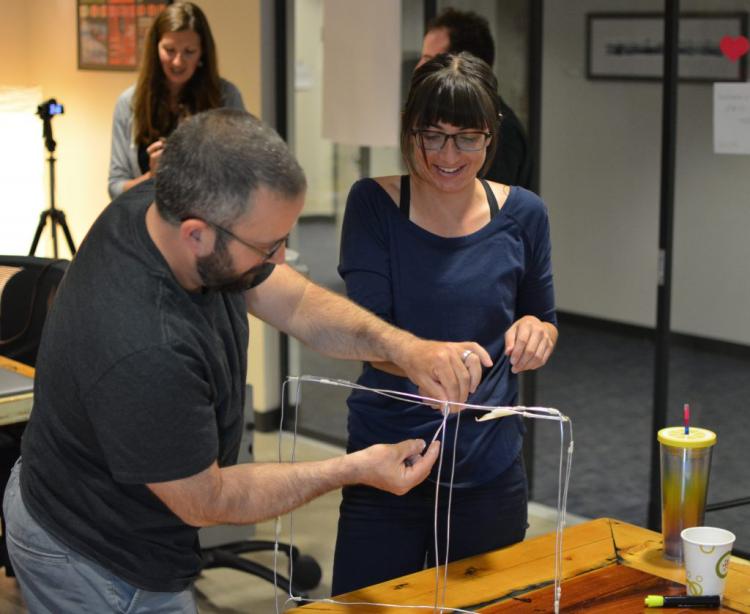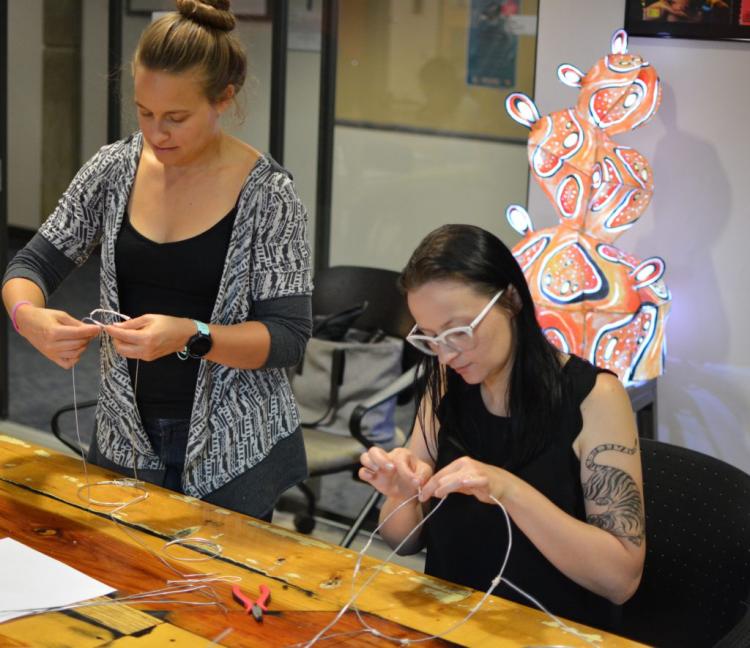Lighting the way to science and art education
Some students don’t pursue art. Others avoid science classes or technical electives, such as computer programming, because they don’t believe they have an aptitude for them.
Lila Finch wants students to feel comfortable crossing those disciplinary boundaries, and use their enthusiasm for one to fuel interest in the other. In August, she brought together technology, art and science teachers from Nederland Middle/High School and Northglenn High School for her Luminous Science workshop, where she demonstrated how educators can blend technology, computer science and art into their curriculums.
“Finding ways to make science and art equally valued in the classroom is a high priority for me,” said Finch, who is pursuing a doctoral degree through the ATLAS Institute’s Laboratory for Playful Computation. “These subjects are thought of as distinct from one another, when in reality they are more integrated.”

During the workshop, teachers learned art, circuitry, soldering, plant science and programming. They constructed colorfully decorated wire-and-paper Japanese lanterns, weaving LED lights inside. They also soldered the LED lights to low-cost Micro:bit microcontrollers, designed to be programmed by first-time coders. The teachers then learned to program the LED lights to respond to incoming data from sensors in an indoor garden, with the LED colors, brightness and other variables representing the garden’s condition, such as the amount of soil moisture, light and the photosynthetic processes happening at that time.
Ben Shapiro, an assistant professor at ATLAS and Finch’s advisor, said that only 15 percent of CU Boulder students enrolled in computer science classes are women, and he encouraged the teachers to support more equitable participation at the high school level.
“‘You (girls) do the painting while we (boys) do the soldering,’ could happen when implementing this project,” he said.
The teachers also discussed how to structure the curriculum so all students succeed, supporting students with intellectual or physical needs, such as those who may have trouble soldering because of poor muscle control.
Andy Vartabedian, an art teacher from Northglenn High School, said he has wanted to bring programing and circuitry into his art class for a while, but up to this point didn’t know how to approach it.
“I could see myself taking a computer programming class, but it would be tough to figure out how to incorporate it into my art class,” Vartabedian said. “This workshop trained us in a very practical way. The programming was clear in its purpose.”
Heather Politi who teaches computer science and math at Nederland Middle/Senior High School, said she is excited to teach her students soldering, as well as how to write the code to transfer data from the garden to the lantern.

“The art side helps make sense of an overflow of numbers, improves our understanding of plant biology and then brings it all together,” Politi said. “Making something physical in additional to the programming will up student engagement.”
Finch, a former high school science teacher and a graduate of Caltech and Lewis & Clark College, said teachers taking her Luminous Science workshop walk away with interdisciplinary curriculums ready to implement in their classrooms. But she envisions a much broader application, where similar interdisciplinary curriculums are implemented all over the world, bringing in aspects from different cultures so that this approach reaches beyond Japanese lantern-making and the science extends beyond a garden.
“We can dream pretty big,” said Finch.
Luminous Science is funded by a grant from Oracle Academy.


